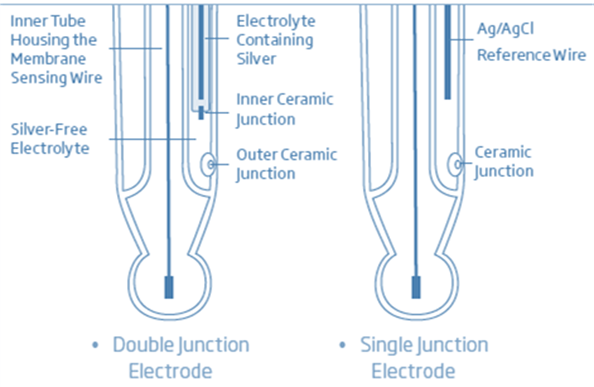- Reference articles
- pH (Potential Hydrogen)
-
Ask Bluebot
-
Bluelab Growbook
-
Product guides / Get started
- OnePen
- pH Pen
- Soil pH Pen
- Conductivity Pen
- Growers Toolbox
- Truncheon Nutrient Meter
- Combo Meter
- Combo Meter Plus
- Multimedia pH Meter
- ORP/pH Meter
- Pulse Meter and App
- Guardian
- Pro Controller
- PeriPod
- Sample Tube and Fitting
- pH Controller
- Connect Stick 2
- pH Probe
- Leap pH Probe
- Replacement probes
- Care kit
-
Reference articles
-
Software guides
-
Care, cleaning and maintenance
-
Returns and RMAs
-
How-To Guides
-
IntelliGrow
-
IntelliClimate
-
IntelliDose
-
IntelliLink
-
Downloads
What is the difference between a single & double junction probe?
The reference cell of a single junction probe has a wick or frit that makes direct contact with the solution being measured. This is an essential component that allows the probe to function. Contamination can occur faster in a single junction probe than a double junction probe.
The reference cell of a double junction probe has a wick or frit that makes contact with a second chamber filled with the same material as in the reference cell. This second chamber has a wick or frit that makes direct contact with the solution being measured. Because it has a second chamber, contamination is slowed and double junction probes can last up to 12 months, or more if well cared for.
A double junction can also help preserve the probe if the sample solution could react and form a solid precipitate (product) with the reference solution thus blocking the wick and stopping it from working. A similar situation would be if the sample contained heavy metals, proteins or sulphites.

The wick/junction exchanges a very small amount of the internal reference solution with a small quantity of the sample being measured. Over time the reference will be contaminated by this result in unreliable and inaccurate measurements.
Regular hydration of a pH probe in KCl solution will help to improve probe lifespan.
